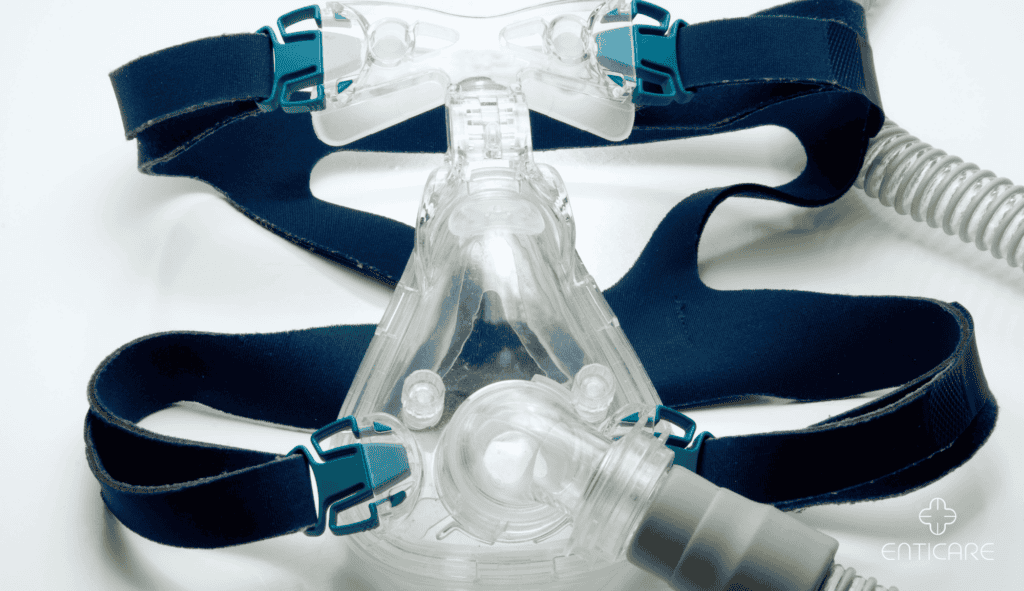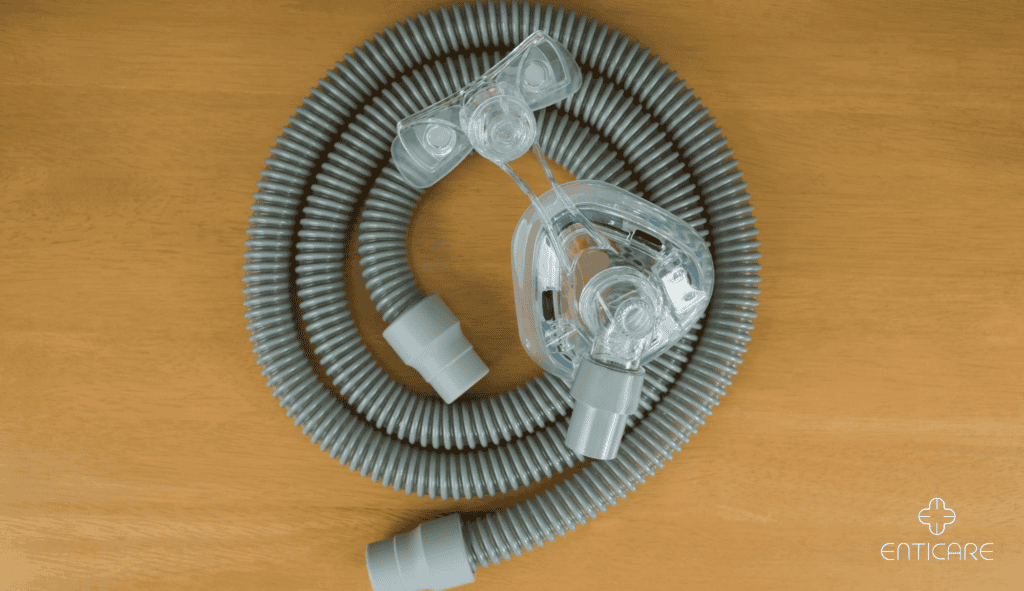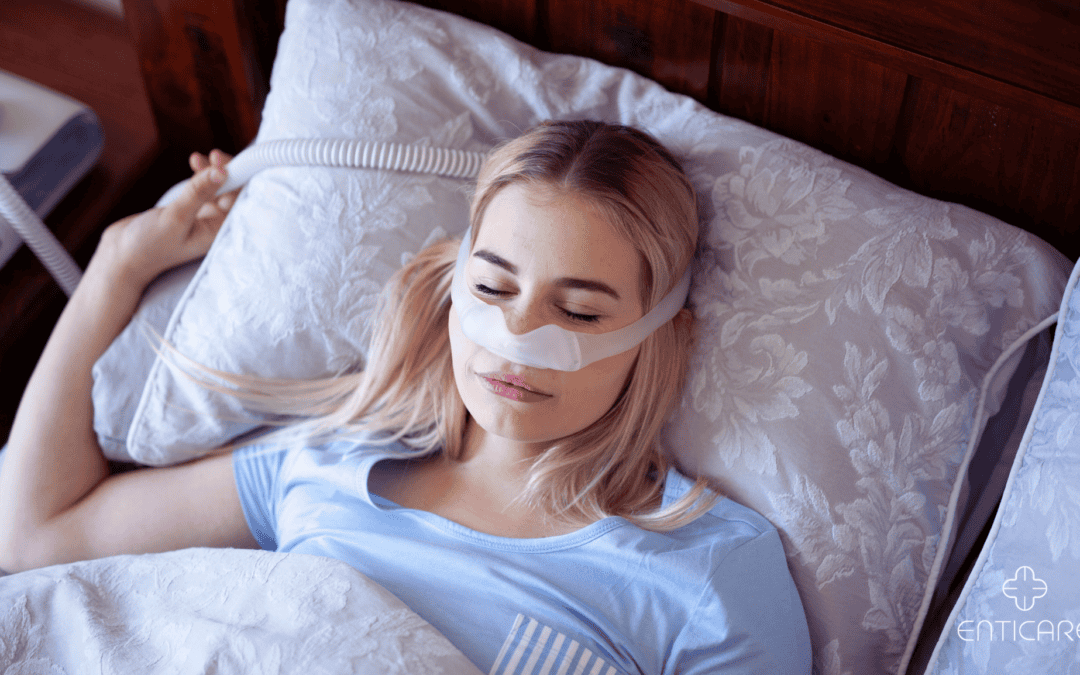Are you struggling to choose between a nasal cradle and a nasal pillow mask for your CPAP therapy?
CPAP therapy offers a lifeline for millions with sleep apnea, but comfort is key to successful treatment. Choosing the right CPAP mask is essential for successful sleep apnea treatment. This blog delves into the functionalities and design of nasal cradle and pillow masks, exploring how they address the need for comfort and effective therapy. With this knowledge, you can participate actively in discussions with your doctor to find the best CPAP mask that suits your needs and preferences.

Understanding Nasal Masks
Under-nose nasal masks are popular for CPAP therapy, offering a comfortable alternative to full-face masks. They do not cover your nose but seal under it, delivering pressurized air through various interfaces to keep your airway open during sleep. For those considering a new CPAP mask, fit packs with multiple cushion or pillow sizes can be particularly convenient, catering to new and experienced users. Here’s a breakdown of two common under-nose nasal mask types:
- Nasal Pillows Mask: This mask features soft, flexible pillows that gently insert into your nostrils, delivering pressurized air. It’s known for its lightweight and minimalist design.
- Nasal Cradle Mask: This mask offers a unique approach. Instead of pillows inserted into the nostrils, it features a soft cradle that sits comfortably under your nose, delivering pressurized air through vents under the nostrils.
Nasal Cradle vs. Nasal Pillow Masks: Key Differences
While both masks cover the nose and deliver pressurized air for sleep apnea therapy, some key differences exist: While some users may favor nasal or nasal pillow masks because they are less intrusive, others find that a full-face mask provides better stability and comfort.
| Feature | Nasal Pillows Mask | Nasal Cradle Mask |
| Air Delivery | Through soft pillows inserted into nostrils | Through vents under the nostrils, with the mask cradling the nose underneath |
| Feeling on the Face | Lighter, more minimalist feel | May feel slightly more substantial due to the cradle design |
| Potential for Leaks | Leaks might occur if pillows don’t fit snugly in nostrils | Leaks might occur if the mask isn’t positioned correctly under the nose |
| Suitability for Movement | Ideal for various sleeping positions | May require some adjustment if you move frequently during sleep |
| Claustrophobia Concerns | Generally less claustrophobic | Also less claustrophobic, however more noticable due to the larger interface in the area under the nose |
Definition and Benefits of Nasal Pillow Masks
Nasal pillow masks are CPAP masks that use inflatable prongs to seal inside the nostrils. These masks are designed to be minimalist and provide a wider field of vision, making them less obtrusive than traditional nasal masks. The benefits of nasal pillow masks include:
- Comfort: Nasal pillow masks are often more comfortable than traditional ones because they do not cover the entire nose. This can reduce the feeling of claustrophobia and make it easier to sleep.
- Minimalist Design: These masks have a smaller footprint and are less intrusive, allowing for a more natural sleeping experience. They are particularly beneficial for individuals who wear glasses or like to read or watch TV before bed.
- Suitable for Side Sleepers: Nasal pillow masks are a good option for side sleepers, as they don’t pressure the nose or mouth. This can help prevent discomfort and ensure a better night’s sleep.
Choosing a nasal pillow mask allows you to enjoy a comfortable and practical CPAP therapy experience, especially if you prefer a less bulky and more streamlined mask design.

Who Might Benefit from a Nasal Cradle Mask?
Here are some potential benefits of using a nasal cradle mask:
- Comfort: The cradle design is more comfortable for individuals who find nasal pillows irritating or uncomfortable in their nostrils.
- Reduced Pressure on the Nose: The cradle avoids direct pressure on the bridge of the nose, potentially decreasing discomfort.
- Reduced Claustrophobia: The open design under the nose might feel less claustrophobic for some users.
It’s All About Finding the Perfect Fit!
Ultimately, your best mask depends on your needs and preferences. Here are some additional factors to consider:
- Facial Anatomy: The shape and size of your nose influence which mask style fits more comfortably.
- Skin Sensitivity: If you have sensitive skin, a nasal cradle mask might be a better option to avoid irritation from nasal pillows.
- Sleeping Positions: A nasal pillow mask might offer more flexibility if you move frequently during sleep.
Additionally, regularly replacing CPAP supplies such as nasal pillows, mask frames, and headgear is crucial to maintaining the effectiveness of your CPAP therapy.
Consult Your Doctor for Optimal Results
Nasal cradle and nasal pillow masks offer valuable options for CPAP therapy. By understanding their functionalities, key differences, and suitability for various needs, you can work with your doctor to find the perfect mask for a comfortable and successful sleep apnea treatment journey. Remember, a good night’s sleep is vital for your overall health, so prioritize comfort and effective therapy! If you have any questions, don’t hesitate to contact Enticare. Our expert team is here to assist you every step of the way.

